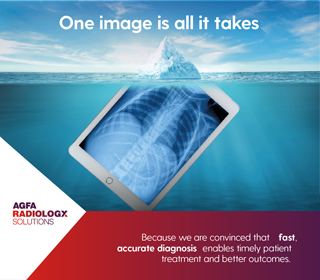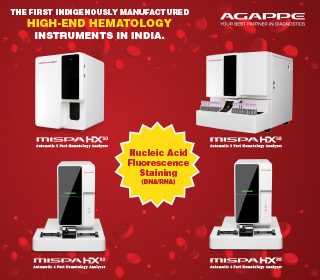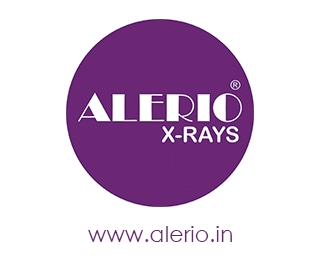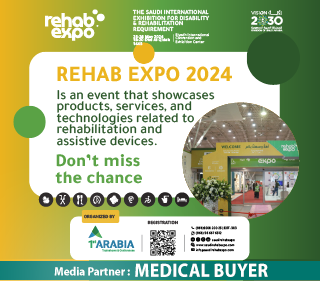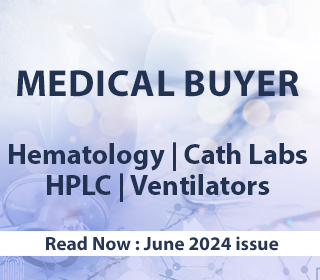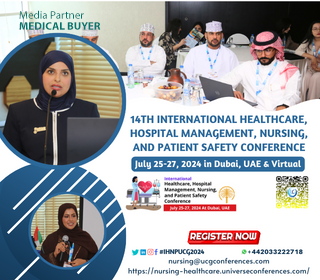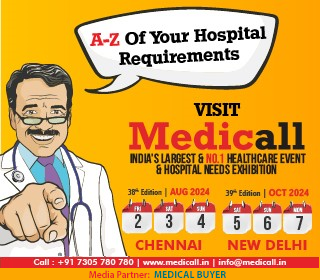International Circuit
Takeda To Demonstrate Global Leadership In Hematology At ISTH 2019
Takeda Pharmaceutical Company Limited (TSE:4502/NYSE:TAK) (“Takeda”), the global biotechnology leader in rare diseases, will present research covering a broad range of rare bleeding disorders at the 27th Annual International Society on Thrombosis and Haemostasis Congress (ISTH), July 6-10, 2019 in Melbourne, Australia. Showcased in 10 oral presentations and 38 poster presentations, these data underscore Takeda’s pursuit of treatment innovation to achieve optimized and personalized patient care in hematology.
“At Takeda, we are proud of the hematology heritage Shire, Baxalta and Baxter built over 70 years and we plan on expanding on it through continued research and innovation, in pursuit of a world without bleeds,” said Dr. med. Wolfhard Erdlenbruch, Vice President Head of Global Medical Affairs Hematology, Takeda. “We look forward to presenting new data from PROPEL and important updates from our gene therapy and leading factor pipeline at ISTH 2019, showcasing our continued development and commitment in this area.”
Importance of personalized prophylaxis in haemophilia
At ISTH 2019, Takeda will unveil new data from the Phase IIIb/IV PROPEL study – a PROspective, randomized, multi-center study comparing the safety and efficacy of ADYNOVATE following PK-guided prophylaxis targeting two different Factor Eight (FVIII) trough Levels in subjects with severe hemophilia A.1 This data will build on results presented at the European Association of Haemophilia and Allied Disorders (EAHAD) 2019,2 to provide important insights into the role of personalized prophylaxis for enabling improved patient outcomes and bleed protection, in people living with hemophilia A.1
- PK-guided rurioctocog alfa pegol prophylaxis in patients with severe hemophilia A targeting two FVIII trough levels: results from the phase 3 PROPEL Study.
- Hemophilia Optimizing Prophylaxis, ABSTRACT #OC 42.1; Monday, 08 July 2019, 14:45-16:00, Melbourne Room 2
Advancing the Promise of Gene Therapy in Hemophilia
Takeda will also present 14 scientific updates regarding its gene therapy pipeline for both hemophilia A and B. The goal of gene therapy is to enable a hemophilia patient’s body to naturally produce a sufficient amount of the missing factor VIII or IX to alleviate bleeding episodes.3 Therefore, it may be possible to help convert a hemophilia patient’s bleeding phenotype from severe to mild or even normal in some cases.4 Takeda’s TAK-754 is our AAV FVIII gene therapy vector currently under investigation in a Phase I/II trial.
Notably, Takeda will showcase the following gene therapy data, in oral presentations:
- Nonclinical pharmacology of TAK-748/SHP648 a novel factor IX (FIX) gene therapy vector in mice and rhesus monkeys.
- Gene Therapy Basic 1; Oral #OC 22.1 ; Sunday, 07 July 2019, 14:45-16:00, Melbourne Room 1
- Preexisting immunity against AAV8 and other AAV serotypes in healthy individuals and patients with hemophilia B.
- Gene Therapy Basic 2; Oral #OC31.4; Monday, 08 July, 2019, 10:45-12:00, Melbourne Room 1
- Whole exome sequencing of patients treated with adeno-associated virus serotype 8-factor IX (AAV8-FIX) gene therapy (BAX335) reveals potential determinants of persistent transgene expression.
- Gene Therapy Basic 2; Oral #31.1; Monday, 08 July, 2019, 10:45-12:00, Melbourne Room 1
- CTLA-4 IgGs – a powerful tool to enable re-administration in AAV8 gene therapy and to suppress anti-AAV8 T cell responses.
- Gene Therapy Basic 2; Oral #31.2; Monday, 08 July, 2019, 10:45-12:00, Melbourne Room 1
Takeda will also present 33 other scientific data releases on the company’s recently acquired broad portfolio of treatments for bleeding disorders, in oral and poster presentations throughout ISTH. These will include:
6 Hematology Franchise Product Oral Presentations
- FVIII:
- Development and characterization of an ELISA combined chromogenic assay for selective measurement of human FVIII activity in animal plasma matrix.
- Development of a formulation for oral delivery of FVIII via a robotic pill.
- The route of FVIII endocytosis by antigen-presenting cells determines the pattern of FVIII peptide-specific T cells activation.
- TAK-755:
- Efficacy of recombinant ADAMTS13 (TAK755) in a humanized mouse model for sickle cell disease.
- VEYVONDI:
- A new transgenic mouse model tolerant to human recombinant von Willebrand factor.
- ADYNOVATE
- PK-guided rurioctocog alfa pegol prophylaxis in patients with severe hemophilia A targeting two FVIII trough levels: Safety and efficacy results from the phase 3 PROPEL Study
38 Poster Presentations
- ADYNOVATE:
- A phase 3b, open-label, multicenter, CONTINUATION study of rurioctocog alfa pegol for prophylaxis in previously treated patients with severe hemophilia A: Clinical course and outcomes in patients with target joints.
- A retrospective, observational study using specialty pharmacy data of rurioctocog alfa pegol in clinical practice in the United States.
- High concentrations of polyethylene glycol (PEG) mediate vacuolation of human monocyte-derived macrophages in vitro without impairing their functionality.
- Outcomes with an extended prophylactic treatment schedule of rurioctocog alfa pegol in a phase 3b, open-label, multicenter, CONTINUATION study in previously treated patients with severe hemophilia A.
- Safety and immunogenicity results from a phase 3b, open-label, multicenter, CONTINUATION study of rurioctocog alfa pegol for prophylaxis in previously treated patients with severe hemophilia A.
- Gene Therapy:
- Factor VIII clotting and chromogenic activities for TAK-754 / SHP654, a clinical hemophilia A gene therapy candidate, using in vitro and in vivo assays.
- Biological relevance of low-titer anti-AAV8 neutralizing antibodies.
- Comparative integration site analysis of two factor IX (fix) gene therapy vectors with different vector design in mice.
- Evaluation of gene therapy mediated factor IX activity in selected in vivo test systems.
- Immunogenicity assessment of FVIII variants for 2nd generation gene therapy.
- Increased immunogenicity of CpG containing Adeno-associated virus serotype 8 (AAV8) constructs might contribute to the drop of transgene expression.
- Influence of obesity on gene therapy mediated factor IX expression in mice.
- Modulation of the Liver Immune Microenvironment by an Adeno-Associated Virus Serotype 8 Gene Therapy Vector.
- Nonclinical efficacy and toxicology evaluation of a human FVIII gene therapy vector (TAK-754/SHP654) in mice.
- Prevalence of preexisting immunity to adeno-associated virus (AAV) in adults with hemophilia: interim results from an international epidemiology study.
- ADVATE:
- AHEAD International and German Studies: Subgroup analysis of patients with moderate or severe hemophilia A receiving antihemophilic factor (recombinant) as Immune Tolerance Induction (ITI) therapy.
- Distinct antibody signatures in patients with FVIII inhibitors undergoing Immune Tolerance Induction (ITI) therapy.
- Interferon-gamma-inducible protein 10 levels are altered in patients with haemophilia with advanced haemophiliac arthropathy.
- FEIBA:
- Bispecific antibodies with light chain specificity for factor IXa and X improve thrombin generation in hemophilia A plasma.
- FVIII knock out mice treated with bypassing agent reveal thrombogenic activity when coadministered with bispecific-FIX/FX antibody.
- Real-world clinical management of patients with hemophila and inhibitors with aPCC: efficacy and safety data after 6 months in the “FEIBA Global Outcome Study (FEIBA GO)”.
- Safety of activated Prothrombin Complex Concentrate (aPCC) monotherapy in patients with haemophilia and inhibitors (PwHI): A systematic review.
- Hemophilia A/ FVIII:
- Characterisation of a new mouse model of haemophilia A developed using CRISPR/CAS9 technology.
- Pharmacokinetic and pharmacodynamic profiles of PSAylated and PEGylated rFVIII indicate consistent extended half-life potential in rodents and monkey.
- Adding the patient’s voice to a hemophilia specific goal menu to facilitate Goal Attainment Scaling: a qualitative study.
- Incidence and prevalence of diagnosed and undiagnosed hemophilia A and hemophilia B in select countries.
- TAK-755:
- Characterization of von Willebrand factor and ADAMTS13 in the Tim Townes mouse model of sickle cell disease.
- Cost of Illness (COI) of congenital Thrombotic Thrombocytopenic Purpura (cTTP) in the United States.
- Design of the first clinical study of recombinant ADAMTS13 for the acute treatment of patients with acquired thrombotic thrombocytopenic purpura (aTTP).
- Dose-dependent effects of recombinant ADAMTS13 (TAK755) on recovery in a humanized mouse model of sickle cell disease.
- Efficacy and PK/PD Relationship of Recombinant ADAMTS13 (TAK755) in a Humanized Mouse Model of Sickle Cell Disease.
- Extension of non-clinical safety margins for recombinant ADAMTS13 (TAK755)
- Feasibility study for subcutaneous route of administration of recombinant ADAMTS13 (TAK755).
- Recombinant ADAMTS13 (TAK755) can override the inhibitory effect of free hemoglobin on VWF multimer cleavage in vitro.
- Recombinant ADAMTS13 reduces the cell adhesion of blood from sickle cell disease mice under shear stress.
- VEYVONDI/ VONVENDI
- Determination of large and ultra-large multimers in recombinant human VWF (rVWF) and pharmacokinetic analyses in patients with Type 3 von Willebrand Disease (VWD).
- Infusion requirements in on demand treatment of bleeding events in von Willebrand Disease (VWD): an indirect treatment comparison between recombinant von Willebrand factor (VWF) and plasma derived VWF concentrates.
- Bleeding patterns in patients with von Willebrand Disease: An analysis of a US medical claims database.
– Calgary Herald




